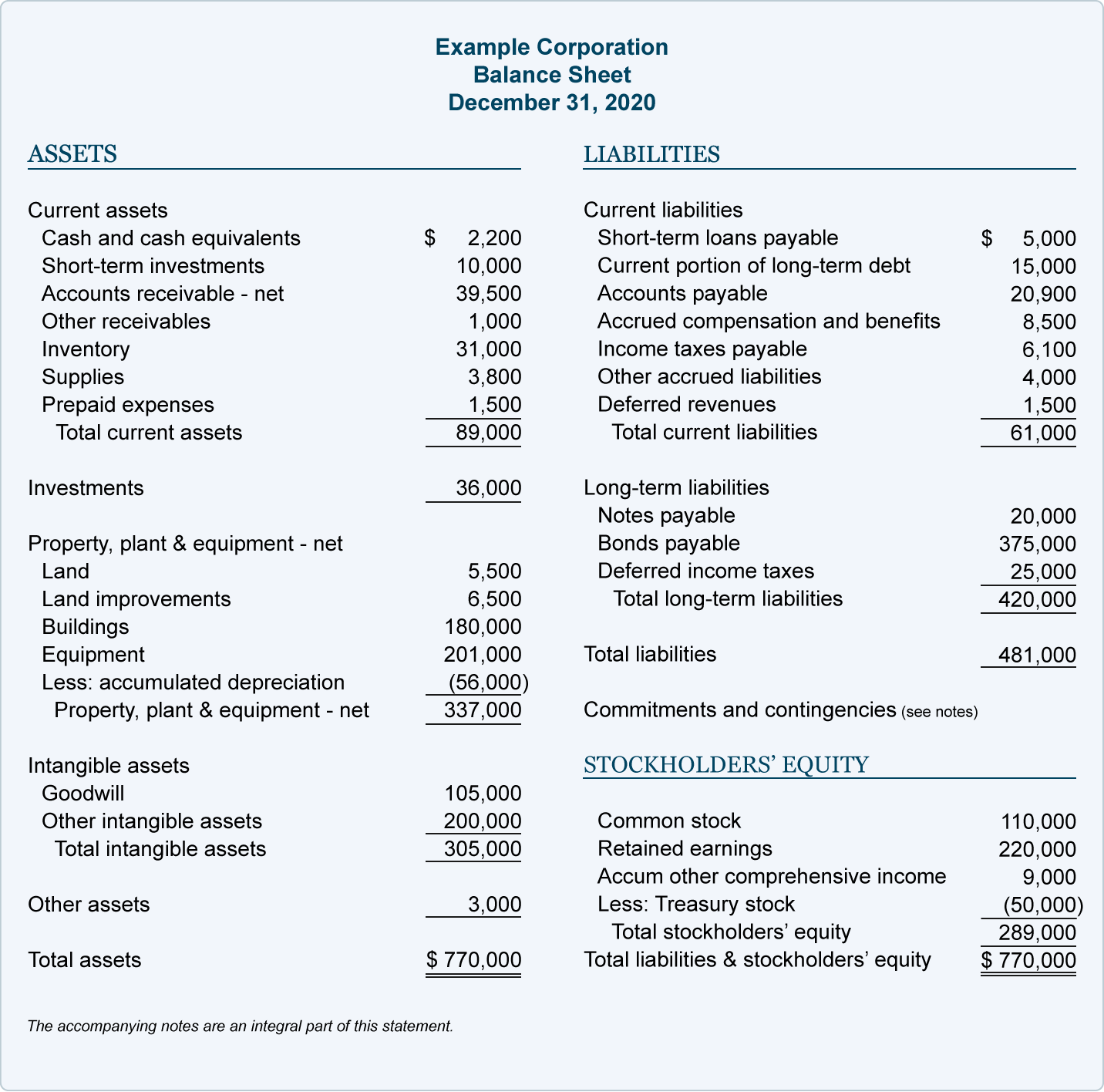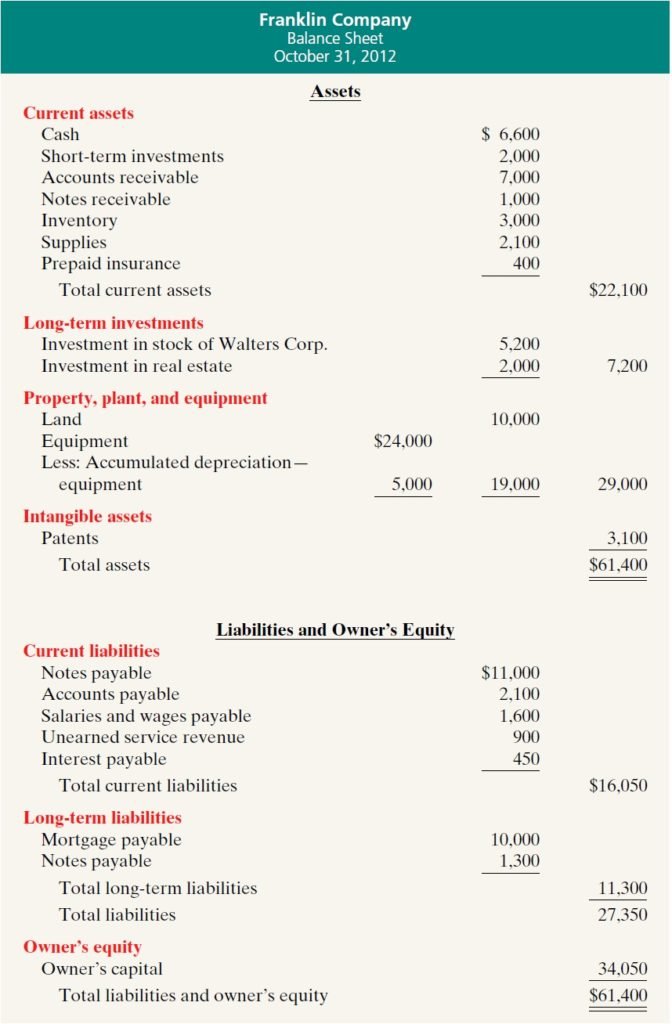If you are a shareholder of a company or a potential investor, it is important to understand how the balance sheet is structured, how to read one, and the basics of how to analyze it. Let’s walk through each one of these sections and answer the question what is a classified balance sheet. This approach is based on the fact that owners’ claims power of attorney are secondary to creditors’ claims with respect to their satisfaction from the assets of the entity. Considering these differences, the term “claim” applied to owners’ equity only in a very broad sense, especially compared to the narrower case of liabilities. Others are cleared by distributing other types of assets or by providing services.
FAQs About Balance Sheets
The most common noncurrent assets are property, plant, and equipment (PP&E), intangible assets, and goodwill. While current assets are often explicitly labeled as part of their own section on the balance sheet, noncurrent assets are usually just presented one by one. Conversely, when the current ratio is more than 1, the company can easily pay its obligations and debts because there are more current assets available for use.
Balance Sheets are Needed for Financial Ratios
Although they cannot be converted into cash, they are payments already made. Prepaid expenses might include payments to insurance companies or contractors. Many important details about a company cannot be described in money on the balance sheet. Notes are used to describe accounting policies, major business events, pending lawsuits, and other facets of operation. Oftentimes, the notes will be more voluminous than the financial statements themselves. A balance sheet, along with the income and cash flow statement, is an important tool for investors to gain insight into a company and its operations.
The Balance Sheet Equation
It cannot give a sense of the trends playing out over a longer period on its own. For this reason, the balance sheet should be compared with those of previous periods. Current Assets is an account where assets that can be converted into cash within one fiscal year or operating cycle are entered.
- Shareholders’ equity belongs to the shareholders, whether public or private owners.
- Because of this, managers have some ability to game the numbers to look more favorable.
- However, if you’re going to become a serious stock investor, a basic understanding of the fundamentals of financial statement usage is a must.
- Current assets include cash, cash equivalents, accounts receivable, stock inventory, marketable securities, pre-paid liabilities, and other liquid assets.
The assets most easily converted into cash are ranked higher by the finance division or accounting firm that prepared the report. The order in which these accounts appear might differ because each business can account for the included assets differently. Current assets include cash, cash equivalents, accounts receivable, stock inventory, marketable securities, pre-paid liabilities, and other liquid assets. A balance sheet shows only what a company owns (and owes) on a specific date by displaying assets, liabilities, and equities.
Liabilities section
Adam Hayes, Ph.D., CFA, is a financial writer with 15+ years Wall Street experience as a derivatives trader. Besides his extensive derivative trading expertise, Adam is an expert in economics and behavioral finance. Adam received his master’s in economics from The New School for Social Research and his Ph.D. from the University of Wisconsin-Madison in sociology. He is a CFA charterholder as well as holding FINRA Series 7, 55 & 63 licenses. He currently researches and teaches economic sociology and the social studies of finance at the Hebrew University in Jerusalem.
Some candidates may qualify for scholarships or financial aid, which will be credited against the Program Fee once eligibility is determined. Liabilities are presented as line items, subtotaled, and totaled on the balance sheet. Some liabilities are considered off the balance sheet, meaning they do not appear on the balance sheet. The articles and research support materials available on this site are educational and are not intended to be investment or tax advice. All such information is provided solely for convenience purposes only and all users thereof should be guided accordingly. Current assets usually appear in the first section of the balance sheet and are often explicitly labelled.
If you were to take a clipboard and record everything you found in a company, you would end up with a list that looks remarkably like the left side of the balance sheet. That’s because a company has to pay for all the things it owns (assets) by either borrowing money (taking on liabilities) or taking it from investors (issuing shareholder equity). By definition, assets in the Current Assets account are cash or can be quickly converted to cash. Cash equivalents are certificates of deposit, money market funds, short-term government bonds, and treasury bills. If it is a short-term investment, such as a money market fund, then it would be classified as a current asset.
The balance sheet is indeed a very helpful financial statement, but it also poses challenges. First, assets on the balance sheet, under generally accepted accounting principles (GAAP), are recorded at historical cost. Historical cost is simply the cost paid for the item at the time it was purchased.
A brief review of Apple’s assets shows that their cash on hand decreased, yet their non-current assets increased. Accounts within this segment are listed from top to bottom in order of their liquidity. They are divided into current assets, which can be converted to cash in one year or less; and non-current or long-term assets, which cannot. Noncurrent assets, on the other hand, are more long-term assets that are not expected to be converted into cash within a year from the date on the balance sheet.
Because of this, managers have some ability to game the numbers to look more favorable. Pay attention to the balance sheet’s footnotes in order to determine which systems are being used in their accounting and to look out for red flags. A liability is any money that a company owes to outside parties, from bills it has to pay to suppliers to interest on bonds issued to creditors to rent, utilities and salaries. Current liabilities are due within one year and are listed in order of their due date. Long-term liabilities, on the other hand, are due at any point after one year.
 Tin Cậy Việt Công ty TNHH Tin Cậy Việt
Tin Cậy Việt Công ty TNHH Tin Cậy Việt 
